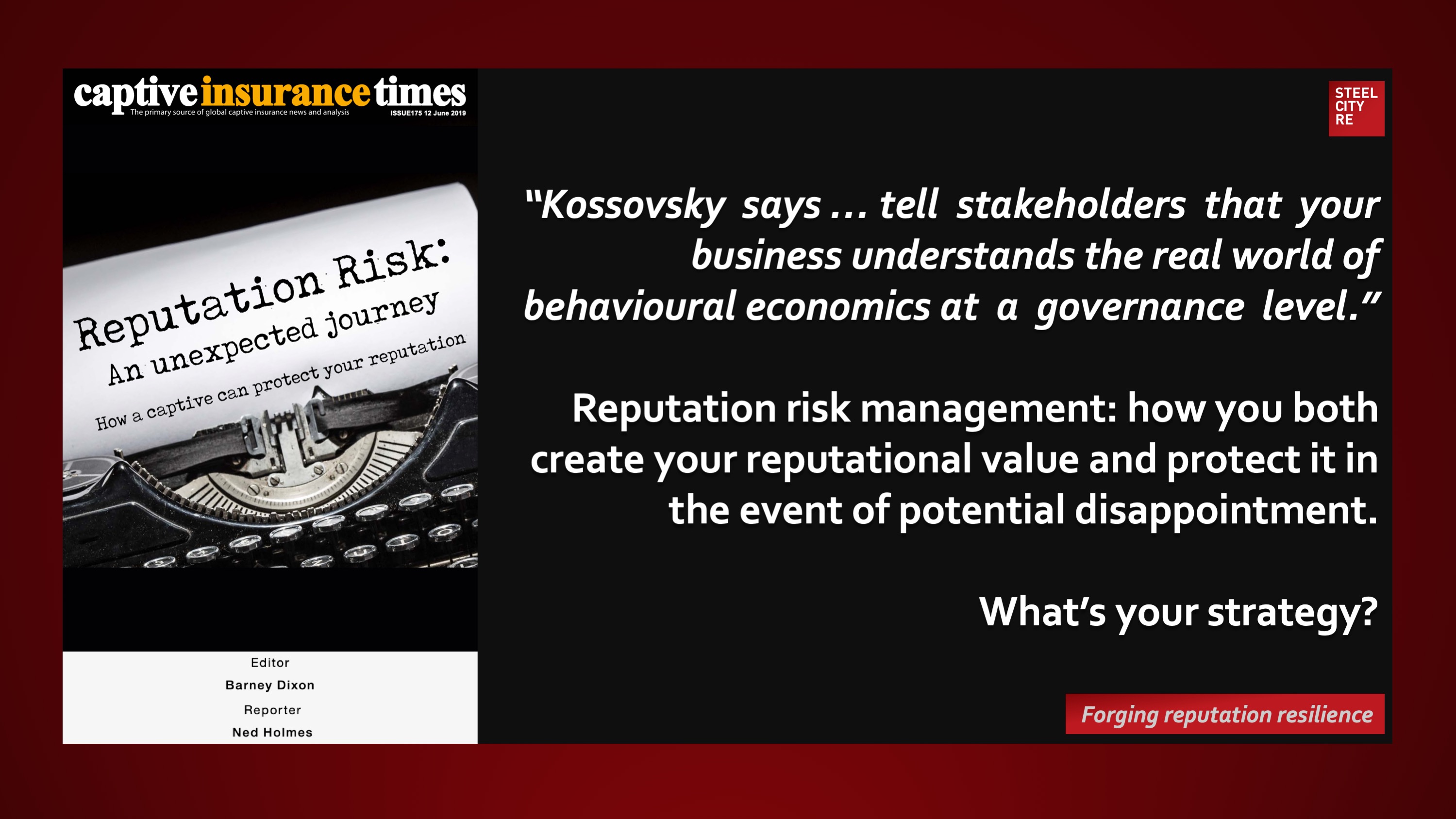“(C)aptives are key to a reputational risk strategy, from its increased capital reserves, to the story a captive tells in managing your reputation…Kossovsky says that being able to tell stakeholders that your business understands the real world of behavioural economics at a governance level through systems, oversight and risk management is how you both create your reputational value and protect it in the event of potential disappointment.”
Captive Insurance Times
June 12, 2019
“Kossovsky says … tell stakeholders that your business understands the real world of behavioural economics at a governance level through systems, oversight and risk management.”
Click on READ MORE for full article.
Reputation risk management: how you both create your reputational value and protect it in the event of potential disappointment.
For a broader view of reputation risk, discover additional articles by Steel City Re here, mentions of Steel City Re here, and comments on newsworthy topics by Steel City Re here. To read an abstracted summary of reputation risk, see below.
Reputations are valuable strategic intangible assets. Threats to these assets⏤ enterprise reputation risks, often mislabeled “brand risks” ⏤ need to be managed, and management needs to be overseen through reputation risk governance lest reputational damage or reputational harm result in long-tailed go-forward losses in economic value and/or political power. Because these intangible risks arise from the interplay of stakeholder expectation, experiences, and media amplification, parametric insurances for intangible asset risks, for reputational value, for reputational harm, and for reputation assurance help mitigate risk by telling a simple, convincing and completely credible story of quality reputation governance to stakeholders. This story telling effect is the expressive power of insurance complementing insurance’s better known instrumental power of indemnification.
Risk management, risk financing in insurance captives, and risk transfer through reputation insurances comprise the constituent elements of a comprehensive solution.
What’s your strategy?

